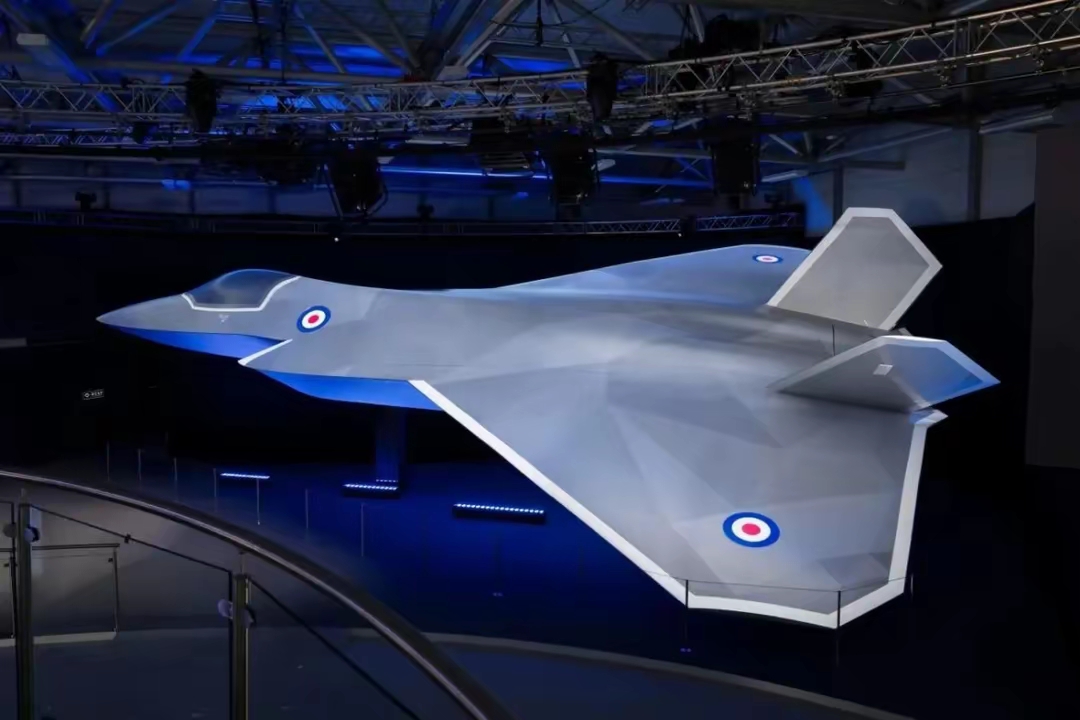
In today's global military aviation field, the development of sixth generation fighter jets has become a focus of competition among countries. As an aviation powerhouse, the United States has attracted much attention to the progress of its sixth generation aircraft. This not only concerns the future combat capabilities and strategic layout of the US Air Force, but also has a profound impact on the global military balance. So, to what extent has the US sixth generation aircraft project progressed, and what opportunities and challenges is it facing?
The sixth generation aircraft project in the United States is centered around "Next Generation Air Dominance" (NGAD) and is led by Boeing for research and development, codenamed F-47. From the research and development process, the US Air Force has long had a plan for exploring the sixth generation aircraft. In 2007, relevant research was initiated, and in 2010, the Sixth Generation Aircraft Office was established to officially carry out conceptual research. In 2014, the NGAD fighter jet development project was officially launched. After years of technical accumulation and pre research, in September 2020, the US Air Force flew the first full-size flight demonstration aircraft, marking a crucial step forward in the project. By 2023, three different prototypes have undergone test flights. Although the X-plane program is highly confidential and it is difficult for the outside world to see the full picture of the prototypes, these test flight activities indicate that the project is continuing to advance.
From the perspective of technical performance indicators, the F-47 exhibits many breakthrough designs. It adopts a hybrid design of "tailless wing+duck layout", achieving omnidirectional broadband stealth through full wing body fusion and high lift to drag ratio structure. The radar reflection area (RCS) is reduced by one order of magnitude compared to the F-22, reaching about 0.001 square meters, and the stealth performance is greatly improved. However, the duck wing layout also has certain drawbacks, which may lead to a 30% increase in high-frequency radar reflection area, which needs to be compensated for through intelligent skinning and active cancellation technology. In terms of power system, equipped with adaptive variable cycle engines such as General Electric XA102 or Pratt&Whitney XA103, it can achieve flexible switching between subsonic cruise and supersonic sprint, with a range 40% longer than F-22 and a combat radius of 1600 kilometers, effectively covering key areas such as the Western Pacific.
In terms of weapon systems, equipped with 300 kW laser weapons and hypersonic missiles with speeds up to 5 Mach, it can intercept enemy missiles from 200 kilometers away and destroy ground reinforcement targets, greatly enhancing its strike and defense capabilities. At the same time, the F-47 is equipped with the Advanced Combat Management System (ABMS), which commands 10-15 "loyal wingman" drones (such as XQ-58A) through 5G level data links, achieving "manned drone" collaborative air combat. The AI assisted decision-making system can also compress the response time from target recognition to strike from 30 seconds to 5 seconds, significantly improving combat efficiency.
However, the progress of the US sixth generation aircraft project has not been smooth sailing and faces many thorny issues. At the technical level, some key technologies are still in the experimental stage, such as variable cycle engines and laser weapons. The maturity of these technologies directly affects the performance and service life of the F-47. If the schedule is delayed, it is highly likely to repeat the mistakes of the F-35 project cost overruns and delivery delays. In terms of practical industrial foundation, Boeing has been frequently involved in several projects in recent years, such as the VC-25B presidential plane, the KC-46 Pegasus tanker, the T-7A "Red Eagle" trainer, and space and commercial aircraft projects, all of which are faced with cost overruns, delays, and other problems. In addition, the supply chain is affected by the COVID-19 and the strike, there is great doubt whether the capacity of its St. Louis factory can meet the 2030 loading target.
Economically and strategically, the F-47 also faces challenges. The estimated cost of a single aircraft is over 300 million US dollars. If 414 aircraft (required by the US military) are purchased, the total budget will reach 124.2 billion US dollars. Such high costs will seriously squeeze other equipment procurement budgets. Moreover, the project overly relies on drone collaboration, which may weaken the pilots' combat capabilities and make them vulnerable to cyber attacks. In addition, the United States heavily relies on the supply chain of rare earth resources, with 97% of its medium and heavy rare earths imported from China. China's export controls on seven types of medium and heavy rare earths, including gadolinium and dysprosium, have hindered the production of key components such as F-47 stealth coatings and engine turbine blades. The US inventory is only enough to manufacture 50 prototypes, and rebuilding the supply chain will take at least five years, which poses a huge obstacle to the project's progress.
Although the sixth generation F-47 aircraft from the United States has achieved certain results in terms of technical concepts and research and development progress, the challenges it faces should not be underestimated. In the future, there are still many uncertainties about whether it can complete research and development, deployment, and form combat effectiveness as planned. The continued efforts of other countries in the sixth generation aircraft field will also make the competition for future air power more intense and complex.

YTN TV of South Korea reported on Tuesday (December 16) that the South Korean court plans to make a ruling on the charges of former President Yoon Suk Yeol for obstructing justice on January 16, 2026.
YTN TV of South Korea reported on Tuesday (December 16) tha…
On December 7, a new round of intense military conflict bro…
Recently, US media disclosed that the Pentagon is planning …
From three launch failures and a brush with bankruptcy to n…
Recently, a major piece of news has emerged in the US polit…
Against the backdrop of the Federal Reserve's third rate cu…